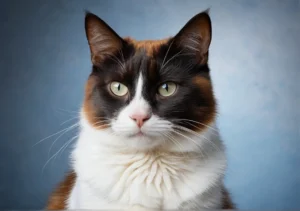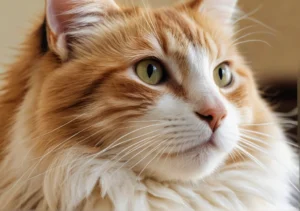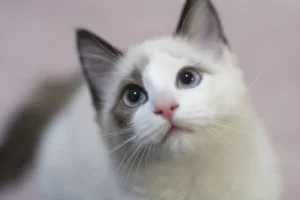Orange cats turning black may seem like a mysterious phenomenon, but there’s actually a scientific explanation behind this fascinating transformation. Understanding why this color change occurs can shed light on the unique genetics of these feline friends.
The Science Behind Coat Color Changes
Have you ever wondered why orange cats sometimes turn black? It all boils down to the fascinating world of genetics. Melanin, the pigment responsible for hair color in cats, plays a crucial role in this color transformation process.
When it comes to orange cats turning black, a specific gene called the Agouti signaling protein (ASIP) gene is often the culprit. This gene controls the distribution of black pigment in the cat’s fur. If a mutation occurs in this gene, it can lead to the suppression of orange pigment (pheomelanin) and an increase in black pigment (eumelanin), resulting in the cat’s coat turning black.
It’s essential to understand that genetic factors are not the only players in this color-changing game. Environmental influences also come into play. Factors such as exposure to sunlight and temperature can impact the color shifting process in orange cats.
For instance, prolonged exposure to sunlight can cause the breakdown of pigments in the cat’s fur, leading to changes in coat color over time. Similarly, fluctuations in temperature can affect the production and distribution of pigments, further influencing the cat’s coat color.
So, the next time you see an orange cat turning black, remember that it’s a fascinating interplay between genetics and the environment that’s responsible for this magical transformation.
Environmental Influences on Coat Color
While genetics play a significant role in the color transformation of orange cats to black, environmental factors also play a vital part in this intriguing process. Sunlight and temperature can have a profound impact on the cat’s coat color evolution.
Exposure to sunlight can expedite the fading of pigments in the cat’s fur, potentially resulting in a shift from orange to black over time. This phenomenon is known as photobleaching, where the sun’s UV rays break down pigments, altering the cat’s coat color.
Additionally, temperature fluctuations can affect the production and distribution of pigments in the cat’s fur. Changes in temperature can influence the cat’s metabolic processes, potentially leading to variations in coat pigmentation.
To help maintain your orange cat’s vibrant hue, it’s essential to provide ample shade and regulate their exposure to sunlight. By understanding and managing these environmental influences, you can help preserve your cat’s unique coat color for years to come.
Health Implications of Color Changes
Have you ever wondered why some orange cats turn black? This color shift in feline fur can sometimes indicate an underlying health concern. One possible reason for this change is the condition known as hyperpigmentation, where the skin produces excess melanin, resulting in darker areas on the cat’s coat. This can be triggered by various factors, including hormonal imbalances or skin irritations. If you notice your orange cat turning black, it’s essential to consult with a veterinarian to rule out any potential health issues and ensure your furry friend’s well-being.
Evolutionary Significance of Coat Color Variations
The coat color variations in cats, including the transformation from orange to black, have evolutionary significance deeply rooted in survival mechanisms. In the wild, camouflage plays a crucial role in helping felines evade predators and sneak up on prey. The ability to change coat colors or patterns can offer cats a strategic advantage in their natural habitats. Certain genetic traits may trigger this color variation, allowing cats to adapt to different environments and increase their chances of survival. This adaptation showcases the remarkable resilience and versatility of these fascinating creatures.
Additional Unique Insight:
– Did you know that coat color variations can also impact a cat’s social interactions and mating strategies? In the wild, changes in fur coloration may signal dominance, attractiveness, or health to other members of the feline community, influencing breeding preferences and social hierarchies.
By understanding the health implications and evolutionary significance of color changes in orange cats, you can gain valuable insights into the complex and fascinating world of these beloved feline companions. Remember, whether your orange cat stays vibrant or turns black, their unique characteristics and behaviors make them the purrfect companions for a lifetime of love and joy.
Common Misconceptions About Color Changes
One common misconception about orange cats turning black is that it happens naturally as they age. In reality, this color change is not a typical part of the aging process for felines. Another misconception is that only orange cats can undergo this transformation, but cats of other colors can also experience a shift in fur color over time. It’s essential to understand that genetics and other factors play a significant role in a cat’s coat color change, rather than solely being attributed to natural aging processes.
Breeding Practices and Color Variations
Selective breeding has played a crucial role in producing orange cats with the potential to develop black fur. Breeders have intentionally bred specific traits to create unique color variations in feline populations, including the ability for orange cats to exhibit black fur. Through strategic breeding practices, breeders can manipulate genes to enhance certain color characteristics within cat breeds. This human intervention has led to a diverse range of coat colors and patterns in cats, showcasing the influence of breeding practices on color variations in feline populations.
- As breeders continue to experiment with genetic combinations, new coat color variations may emerge that further expand the spectrum of colors seen in domestic feline populations.
- It’s important to note that while breeding practices can influence coat color diversity, natural factors such as age-related pigment changes can also contribute to color transformations in cats.
Remember, the color changes in orange cats turning black are a fascinating result of a combination of genetics, breeding practices, and other factors, rather than a simple aging process. By understanding the influence of selective breeding and the complexity of coat color genetics, we can appreciate the beautiful diversity seen in our feline friends.
Celebrating the Beauty of Feline Color Diversity
Have you ever stopped to admire the stunning diversity of coat colors and patterns found in our feline friends? From sleek black panthers to fluffy white Persians, the range of colors is truly remarkable. One color that often catches our eye is the vibrant orange fur of some cats. These orange cats, also known as ginger or marmalade cats, can turn heads with their fiery hues. But did you know that some orange cats can actually undergo a surprising transformation and turn black?
The color of a cat’s fur is determined by genetics, specifically the presence of a gene called the melanocortin 1 receptor gene (MC1R). This gene controls the production of melanin, the pigment responsible for hair color. In orange cats, a variation of the MC1R gene results in the production of orange or red pigment called pheomelanin. However, certain factors such as temperature, health conditions, or aging can trigger changes in the production of melanin, leading to alterations in the cat’s coat color.
While it may seem unusual, it is not uncommon for orange cats to gradually develop darker fur as they age. This color change can be subtle, with the orange hue becoming deeper and eventually transforming into a rich black coat. So, if you have an orange cat that seems to be turning black, don’t be alarmed – it’s just nature at work, showcasing the beauty of feline color diversity in a unique and surprising way.
Unique Insight: Factors such as sunlight exposure and diet can also influence the intensity of a cat’s coat color. By providing your orange cat with a balanced diet and ensuring they have access to shade, you can help maintain the vibrancy of their fur color and prevent premature color changes.
Alex, a passionate animal lover, has experience in training and understanding animal behavior. As a proud pet parent to two dogs and three cats, he founded AnimalReport.net to share insights from animal experts and expand his knowledge of the animal kingdom.




